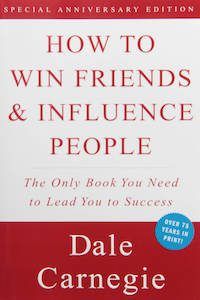
Why Self-Help Books Feature Authors on the Cover
Self-help books have exploded this past decade, with offerings from renowned celebrities such as Oprah Winfrey and even the late Elizabeth Taylor.
The genre focuses on the popular psychology of virtually any aspect of the human experience, from romantic relationships to spirituality. The ultimate goal is to get readers to optimize their self-awareness, so they can take action and achieve satisfaction with their lives.

Unfortunately, these don’t tell readers anything about a book’s content. To be fair, there aren’t many images that loyally relay a 10-step plan to a better life without looking like a PowerPoint slide. The solution seems to be one of two things: an image of the author or text with the author’s name clearly displayed.
Think Sheryl Sandberg leaning in with her right hand under her chin and Rachel Hollis kneeling next to a fire hydrant, drenched and smiling.
Judge A Book By Its Cover

Self-help books relay personal philosophies of their authors, who rarely hold degrees in medicine or psychology, begging the question if they are qualified to give the advice in the first place (but that’s a different story). The standard draw that a respected “expert” would have, such as Siddhartha Mukherjee, MD, writing about the history of cancer in The Emperor of All Maladies or Sarah E. Hill, PhD, writing about the effects of birth control on the female brain in This Is Your Brain on Birth Control, does not exist for self-help authors. Instead, the draw is the author’s public reputation and brand.

Who Writes Self-Help Books
Since the self-help industry is largely unregulated, the “experts,” who are mainly life coaches, successful business owners, and celebrities, rely on their reputations to convince audiences that their personal philosophies are sound. The self-help industry has no formal peer review process, so readers must trust the author to give sound personal philosophies.

I’ve been a loyal listener of Rachel Hollis’s podcast Rise for two years now, so when her book Girl, Stop Apologizing: A Shame-Free Plan for Embracing and Achieving Your Goals came out in 2019, I was immediately interested because I have a relationship with her work. It also helps that the image for her podcast is her portrait, so I recognized her image the book cover and associated its content with the branded self-help advice that I’ve grown to enjoy on Rise.

Don’t get me wrong, turning to a book in a time of need is an exercise in trust. I always turn to authors whose work I’ve admired because I trust the quality of their work, and a cover that sports a friendly face is much more appealing than a nonsensical illustration. At the end of the day, a book’s cover is superficial to its content.
Editor’s Note: This post originally stated that close to two decades had passed since the publication of How to Win Friends and Influence People by Dale Carnegie. While the anniversary edition was published in 1998, it was originally published in 1936.

















